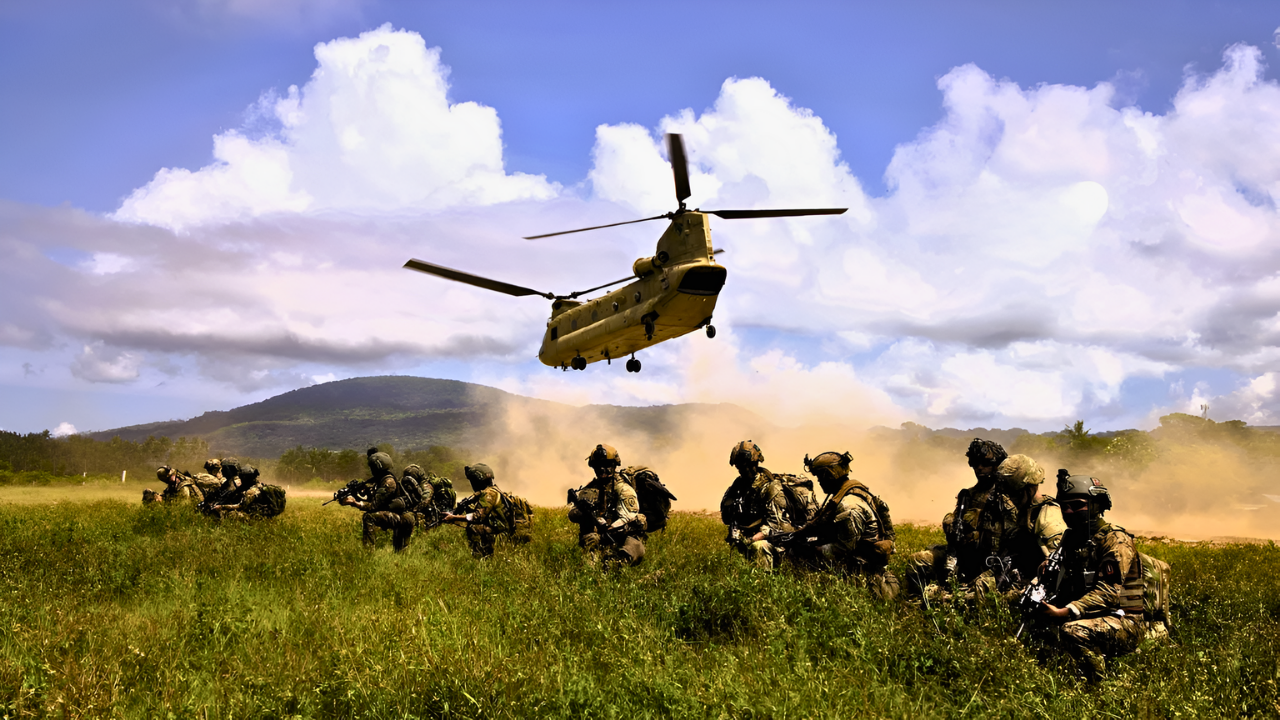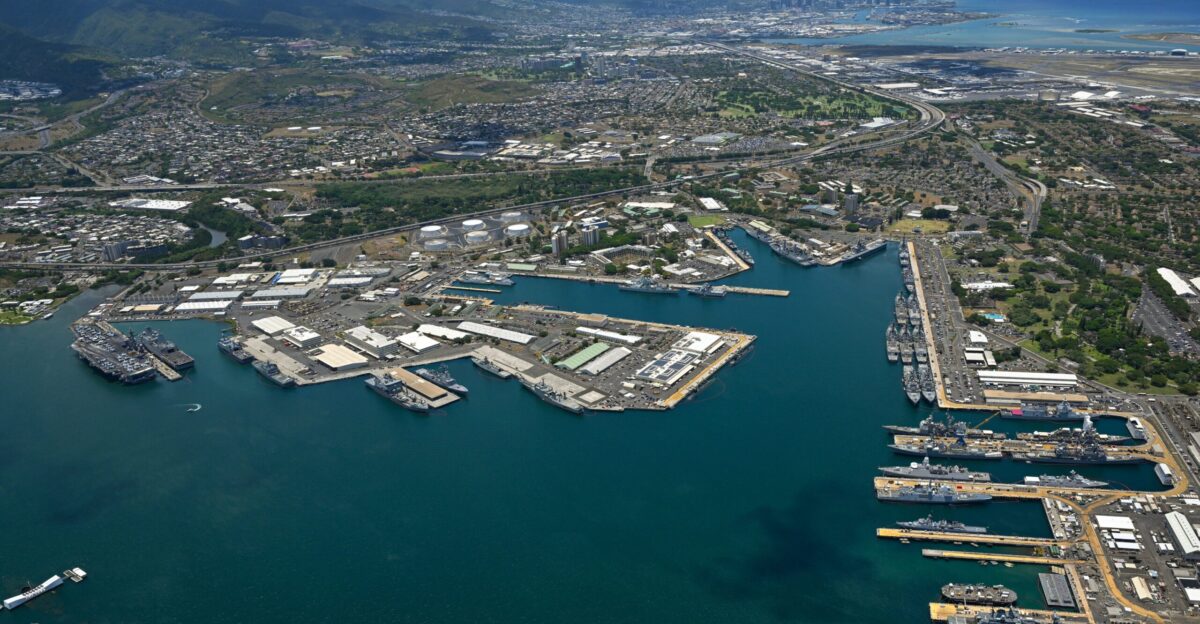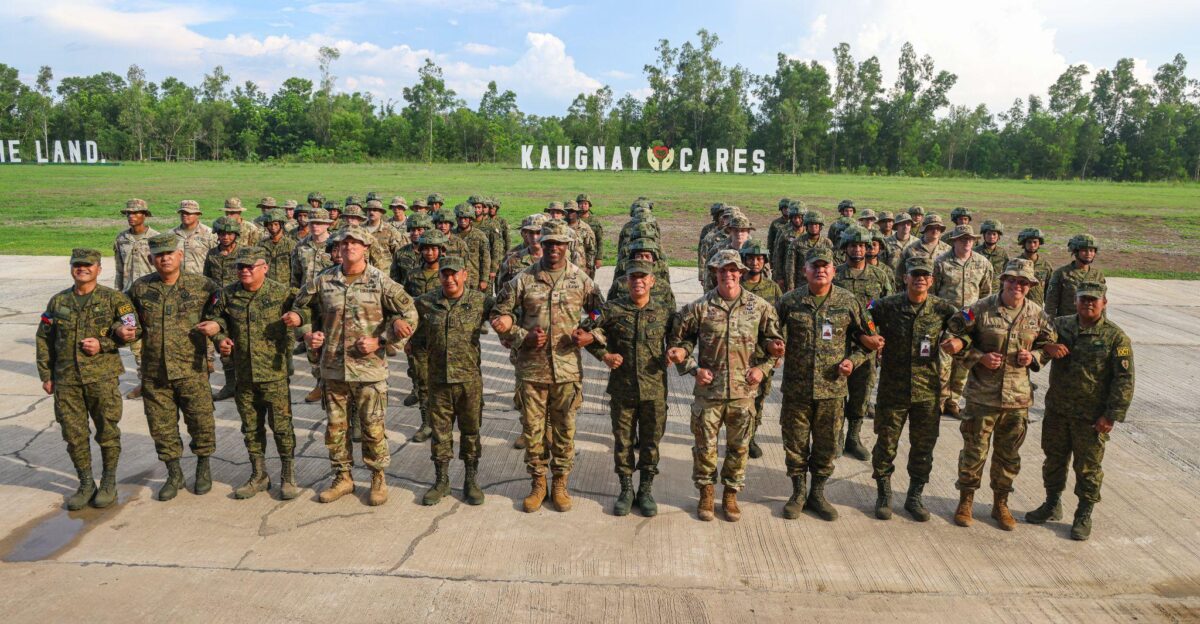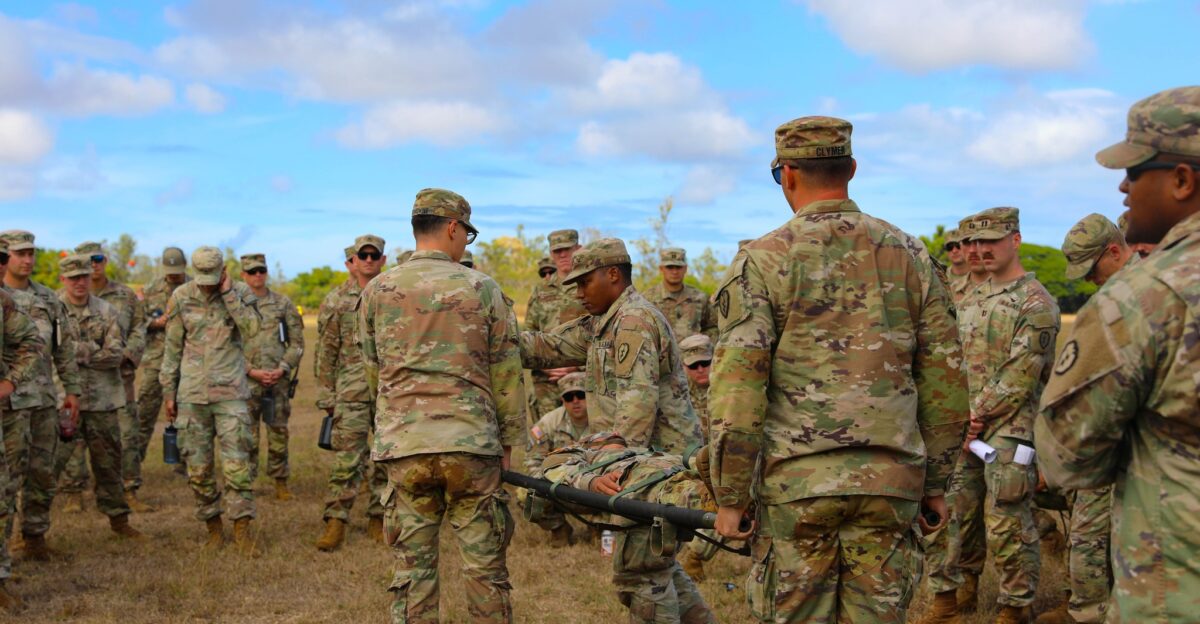
The Indo-Pacific region is currently experiencing unprecedented military pressure, primarily due to heightened naval and air operations from rival powers. China’s military assertiveness around Taiwan and the Philippines has raised alarms, prompting urgent responses from allied nations.
The United States and its partners are rapidly increasing their military presence and readiness to address the growing regional instability. Analysts are concerned that a lack of preparedness could lead to miscalculation in potential flashpoint areas, emphasizing the critical need for strategic deterrence and cooperation among allies to maintain balance in this volatile environment.
U.S. Deterrence Strategy

Recognizing the rising tensions in the Indo-Pacific, the Pentagon has made deterrence in this area a core part of its strategic framework. This initiative includes deploying advanced military systems and conducting multinational drills throughout Southeast Asia.
Recent U.S. military maneuvers highlight an emphasis on joint operations and strengthen interoperability with regional allies facing common threats. As defense budgets and exercise rotations expand significantly, military planners assert that coordinated, obvious operations are essential to demonstrate commitment and reduce the risk of conflict miscalculations among the nations involved in the region.
Introducing the JPMRC

In a groundbreaking move, the Joint Pacific Multinational Readiness Center (JPMRC) was established at Schofield Barracks in 2022. This marked the U.S. Army’s first new Combat Training Center in more than five decades. Unlike the European-focused centers, the JPMRC is designed explicitly for jungle, archipelagic, and large-scale operations necessary for Pacific contingencies.
It provides a platform for integrating U.S. forces with regional allies in realistic training environments. The center’s purpose-built structure aims to enhance Army readiness doctrine across the theater, ensuring forces are well-prepared for potential operations in diverse and complex settings.
Addressing Coordination Challenges

As military tensions rise, allied forces from nations such as the Philippines, Singapore, Thailand, and Malaysia are under pressure to enhance coordination and cooperation. Historically, interoperability issues stemming from differing tactics, equipment, and command structures have hindered the effectiveness of joint operations.
The JPMRC rotations serve to compress months of training into intensive two-week drills, requiring allied units to adapt quickly under realistic stress conditions. Success in these exercises requires rapid cultural and tactical adjustments among diverse military forces, underscoring the importance of teamwork and collaboration in addressing shared security challenges.
The 6-Nation Air Assault Exercise

On November 6, 2025, the U.S. Army’s 2nd Battalion, 25th Aviation Regiment executed a large-scale maritime air assault exercise at Ford Island, Hawaii, as part of JPMRC Rotation 26-01. This significant event drew participation from six nations: France, Malaysia, the Maldives, the Philippines, Singapore, and Thailand, as well as American units.
The exercise involved coordinated operations using CH-47 Chinook helicopters and AH-64 Apache gunships, simulating scenarios across an island chain. This dynamic exercise tested multinational command-and-control integration at high combat intensity, showcasing the ability to operate seamlessly in joint environments.
Training Ground in Hawaii

Ford Island, home to the historic Naval Station Pearl Harbor, served as a key location for the recent air assault exercise. The operation extended across multiple Hawaiian islands, including the Pohakuloa Training Area and Kahuku, which provided an ideal training backdrop.
The diverse terrain characterized by dense jungles, narrow passages, and limited landing zones mirrors the challenges forces might face in the South China Sea. Hawaii’s geographic isolation and well-equipped training infrastructure stand as vital assets for large-scale, multinational drills, enhancing realism and operational readiness for future contingencies across the region.
Soldiers Under Realistic Pressures

Participants in the recent air assault exercise pushed their limits with 96-hour operations under hot and humid conditions, designed to replicate the stress of real combat. Helicopter crews executed precise insertions into contested landing zones, while ground units secured perimeters against simulated threats.
Medical teams operated field hospitals that treated casualties in real time, showcasing the logistical capabilities of the allied forces. Soldiers described the experience as “as close as we get to actual combat without live fire,” underscoring the realism of the training and the importance of these exercises for preparing to safeguard regional interests.
Observer Insights on Coordination Gaps

Third-party observers from New Zealand, embedded within the exercise, documented various interoperability challenges faced by allied units, including delays in communication, discrepancies in tactical doctrines, and incompatibilities with equipment. Nevertheless, observers noted significant improvements in coordination throughout the rotation, with forces from France, the Philippines, and Thailand demonstrating advanced tactical proficiency.
While the exercise highlighted friction points in joint operations, it validated the necessity and effectiveness of multiple multinational training initiatives, prompting recommendations for more frequent joint air-assault drills and the establishment of standardized communication protocols.
Participants Share Their Experiences

“Training with allies is crucial,” stated Captain Maria Reyes of the Philippine Army, who participated in the joint exercises. “It’s not just about showcasing our capabilities but also learning from each other.” This sentiment reflects the collaborative spirit present during the JPMRC exercises.
Another soldier, Private First Class Jake Thompson from the U.S. Army, emphasized, “The integration was seamless. Working together helps us understand each other’s strengths and weaknesses.” Such comments highlight the human dimension and personal commitment inherent in multinational military cooperation.
Multinational Military Collaboration

The JPMRC exercises have showcased a new level of military collaboration among the participating nations, illustrating the importance of interoperability in enhancing collective security. The complexities of modern warfare necessitate that all countries involved are entrusted to work together effectively.
The exercise not only aimed to prepare for potential conflicts but also emphasized building trust, understanding operational capabilities, and fostering lasting relationships among allies. As tensions rise in the Indo-Pacific, these collaborative efforts serve as a vital counterbalance to potential aggression, reinforcing the commitment to regional security and stability.
Technological Innovations at JPMRC

Technology plays a vital role in modern military operations, and the JPMRC exercises are no exception. Advanced systems, such as drones and ISR (intelligence, surveillance, and reconnaissance) platforms, were employed to enhance situational awareness during the air assault.
The integration of cutting-edge technology alongside traditional military tactics allows participating forces to adapt rapidly to changing battlefield dynamics. “These innovations can give us a significant edge,” remarked Major Alex Chen of the Singapore Armed Forces. As the military landscape continues to evolve, such technological adaptations are key to future readiness.
China’s Reaction to JPMRC Exercises

The strategic focus of the JPMRC exercises has drawn criticism from China, which has labeled them as provocative actions that exacerbate regional tensions. Chinese officials have expressed concerns about the perception of U.S. and allied military presence as a direct threat to their national security.
Military analysts indicate that this response highlights the delicate balance in the Indo-Pacific, where exercises like JPMRC can be perceived as both preparedness measures and aggressive posturing, thereby affecting diplomatic relations among regional powers. The situation continues to evolve, revealing the complex interplay of military strategy and diplomacy.
Strengthening Regional Partnerships

In light of the tensions in the Indo-Pacific, enhancing regional partnerships has become a strategic priority. The U.S. military’s ongoing commitment to strengthening alliances with partners such as Japan, Australia, and South Korea is instrumental in creating a united front against potential threats.
As countries collaborate on joint military training and operational planning, they enhance their capacity to respond effectively to emerging crises. “Collective security in the Indo-Pacific must be prioritized,” stated Dr. Sarah Mitchell, an expert in regional security. The focus on alliances is shaping the future security landscape in the region.
Looking Ahead: Future Exercises

As military planners analyze the outcomes from the JPMRC exercises, future training will likely incorporate lessons learned to optimize joint operations. The goal is to refine interoperability and readiness among allied forces further. Plans for additional multinational drills are already in discussion, with an emphasis on expanding the number of participating nations to include newer partners.
“We must constantly evolve our strategies to meet future challenges,” indicated Colonel Robert James from the U.S. Army. The commitment to ongoing training reflects an understanding that continuous improvement is crucial in a rapidly evolving security environment.
The Role of Local Communities

Local communities in Hawaii have played a significant role in supporting the U.S. military’s training operations, providing unique insights and resources vital to the success of these exercises. Collaborations with local organizations not only facilitate logistics but also build goodwill and understanding between military personnel and residents.
“Our partnership with the military helps foster a sense of community and shared responsibility,” remarked Leslie Kaimi, a local community leader. Such engagements are critical; they ensure that training is conducted smoothly while fostering ties that enhance regional stability.
Environmental Considerations in Training

Conducting large-scale military exercises raises critical environmental considerations. The U.S. Army is mindful of its ecological footprint and is committed to complying with environmental regulations during operations. Training exercises at JPMRC incorporate assessments to ensure that local wildlife and habitats are protected.
“Balancing military readiness with ecological responsibility is essential,” commented ecological consultant Dr. Emma Lu. Awareness and proactive measures contribute to minimizing environmental impact while maintaining operational effectiveness during training in sensitive ecosystems, such as those found in Hawaii.
Enhancing Communication Systems

Effective communication remains a cornerstone of successful multinational military operations. The complexities of joint exercises reveal gaps that must be addressed to improve operational efficacy. This includes the need for standardized communication protocols to ensure seamless coordination between allied forces.
“When everyone speaks the same language, both literally and figuratively, it leads to better outcomes,” stated Lt. Colonel David Smith, who oversaw communication aspects during the JPMRC. Enhanced communication systems are pivotal as forces prepare to address modern security challenges effectively.
A United Front

The JPMRC exercises represent a crucial step toward fortifying multinational military cooperation in the Indo-Pacific. As geopolitical tensions evolve, the importance of joint readiness cannot be overstated. U.S. military efforts, in partnership with regional allies, aim not only to enhance military capabilities but also to strengthen bonds of trust and understanding among nations.
As they navigate uncertain waters, the collaborative resilience demonstrated during these training operations serves as a testament to the unwavering commitment to maintaining peace and stability in a region of profound strategic significance.
Call to Action: Engage and Share

As we reflect on the implications of the JPMRC exercises, we invite you to engage further with this vital topic. Understanding the dynamics of international military collaboration helps us appreciate the complex security environment of the Indo-Pacific.
Together, we can promote dialogues that strengthen partnerships and advocate for peaceful resolutions to regional tensions. Share this article with colleagues and peers to encourage greater awareness and engagement on these pressing global security issues.
Join the Discussion

What are your thoughts on the recent JPMRC exercise and its impact on regional stability? How do you view the role of military cooperation among allied nations? Join the discussion by sharing your insights and contributing to a broader conversation about the future of security in the Indo-Pacific.
Together, we can gain a deeper understanding and navigate the increasingly complex landscape of international relations.